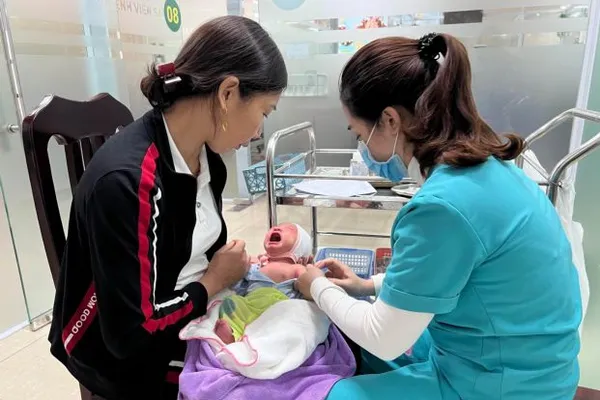 Life & Style
Life & Style

PAD is a common circulatory problem but few people know about it. Others would even ask why does it matter.

|
| Dr Catherine Gonzalez. — Photo courtesy of Family Medical Practice |
By Dr Catherine Gonzalez *
An article published in Việt Nam News on March 2015 entitled 'City sees rise in PAD patients' reported that more and more patients are being diagnosed with PAD (peripheral artery disease) in HCM City University Centre. It made me ask why? PAD is a common circulatory problem but few people know about it. Others would even ask why does it matter.
What is PAD or PVD (peripheral vascular disease)?
The American Heart Association defines PAD as the narrowing of the arteries to the legs, stomach, arms and head. Arteries are blood vessels that carry oxygen-rich blood to your heart and other parts of the body. PAD commonly occurs in the pelvis and legs. It develops when fat and other substances build up in the arteries. It can be dangerous because these blockages can restrict blood flow to the limbs and other parts of the body. If it is not treated, the tissue affected may get infected or die, which we call gangrene, and lead to amputations. It can be also an early sign of atherosclerosis, a condition wherein chronic fatty deposit (plaque) builds up inside your arteries that puts you at risk for vascular inflammation and blood clots which can block blood flow to the heart and brain. Fortunately, PAD is treatable and preventable.
How common is PAD?
An estimated 202 million people around the world lived with PAD in 2010. In the US, the prevalence of PAD is 20 per cent among those who are more than 55 years old, but this number varies worldwide. Europe and North America have an estimated 27 million individuals affected, with 413,000 inpatient admissions annually attributed to PAD. There are no clear statistics as to how many cases are in Southeast Asia.
Who is at risk of PAD?
While there are risk factors that cannot be modified like increasing age, a family or personal history of PAD and cardiovascular disease, most of the risk factors can be controlled which include: high blood pressure, high cholesterol, overweight or obesity, and physical inactivity.
Tobacco smoking is a particularly strong risk factor for PAD, where smokers are 2.5 times more likely to develop PAD than non-smokers. Diabetic patients are 2-4 times more at risk than non-diabetic patients. In 2018, according to the WHO, one in two adult males in Việt Nam smoke tobacco. In 2016, the prevalence of diabetes in Việt Nam doubled in the past 10 years, and one in every 20 adult Vietnamese people have diabetes. These two major risk factors would partly explain increasing cases of PAD in Việt Nam.
What are the symptoms of PAD?
It is rather difficult to know if one is suffering from PAD. About 50 per cent of people do not have any symptoms. Because of this, the majority of the cases of PAD go undetected in routine clinical practice. Most who may have symptoms experience pain (or discomfort, numbness and tiredness) in their legs while they walk which we call claudication; then it goes away when they rest. Others may experience quite severe symptoms such as leg pain that does not go away even when you stop exercising, foot or toe wounds that won't heal or heal very slowly, the formation of gangrene or dead tissue, significantly decreased temperature of the lower leg to other leg or other parts of the body.
How is PAD diagnosed?
Your doctor will review your medical history (identify your symptoms and risk factors) and examine you. Your doctor can order a simple test called ABI (ankle-brachial index). It is a 10-15 minute procedure that is completely non-invasive and available in Việt Nam. It measures and compare blood pressures from the arm and ankle to the right and left side of the body. From here, it will screen if there are possible blockages or narrowing of the arteries. Your doctor may require further tests if the result is abnormal.
Treatment of PAD?
PAD is treated by lifestyle changes, medication or both. Some may need minimal invasive procedure or surgery.
Screening for PAD is recommended for adults who are:
How to prevent PAD?
Lifestyle and diet changes: stop smoking, eat a diet low in saturated and trans fats, and be physically active. Control diabetes and blood pressure by religiously taking your medications, following diet and exercise programmes appropriate to your medical condition, and regularly follow up with your doctor.
If you think that you may have PAD, have risk factors or want to know more, consult your health care professional. — Family Medical Practice
*Dr Catherine Zapanta Gonzalez was a cum laude graduate of the Angeles University Foundation before pursuing her medical degree and interning at the Chinese General Hospital in Manila, the Philippines before working as an emergency room resident physician. She has been a physician at FMP Hanoi since 2014.
Family Medical Practice was the first foreign-owned primary healthcare provider in Việt Nam, and has consistently remained at the forefront of international-standard medicine since 1995. It offers extensive healthcare and emergency medical services nationwide to Vietnamese, expatriate and corporate customers.
For more advice on any medical topics, visit Family Medical Practice Hanoi at: 298 I Kim Mã, Ba Đình. Tel: (024) 3843 0748. E: hanoi@vietnammedicalpractice.com.
FMP’s downtown Hồ Chí Minh location is: Diamond Plaza, 34 Lê Duẩn, District 1; 95 Thảo Điền, District 2. Tel: (028) 38227848. E: hcmc@vietnammedicalpractice.com
FMP Đà Nẵng is located at 96-98 Nguyễn Văn Linh, Hải Châu District, Đà Nẵng. Tel: (0236) 3582 699. E: danang@vietnammedicalpractice.com.









